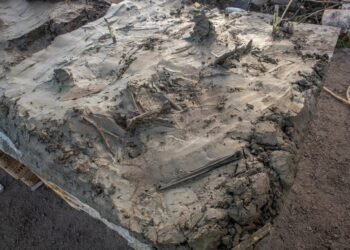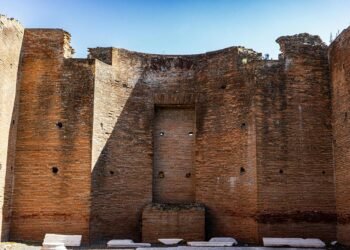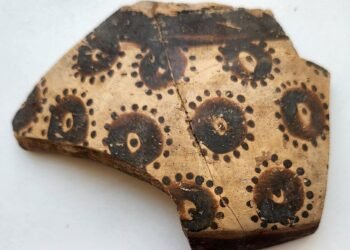A recent study reveals that a sword coated in sand, which was discovered at the seabed of the Mediterranean Sea close to Israel, was probably unintentionally lost by a Crusader during a battle that occurred approximately 800 to 900 years ago.

The underwater expedition that led to the discovery of the sword —dubbed the Newe-Yam sword— occurred in 2021. This well-preserved weapon’s blade measures almost 88 centimeters (3 feet) long and 4.6 centimeters (1.8 in) wide.
At first, archaeologists faced limitations in deciphering the sword due to its concretion-coated state. However, these very deposits played a crucial role in preserving the weapon.
Through X-ray analysis, researchers were able to penetrate the layers of marine concretion and visualize the original outline of the artifact. This analysis revealed that the sword’s blade was bent, indicating possible damage incurred during battle.

Swords damaged in combat could often be restored to their original shape, but the fact that this sword remained bent and devoid of a sheath (scabbard) strongly suggests its use during the tumultuous Crusades.
The Crusades, a series of religious wars between Christians and Muslims spanning from CE. 1095 to 1291, were marked by intense battles and confrontations.
According to Jacob Sharvit, co-author and director of the marine archaeology unit of the Israel Antiquities Authority (IAA), “The sword was used by a Crusader warrior who settled in the country after the First Crusade and established the Kingdom of Jerusalem in 1099.”
The rarity of discovering whole swords from this period adds to the significance of this find. Sharvit noted that despite historical records describing bloody battles between Crusaders and Muslims, complete swords are a rarity. The scarcity could be attributed to the fact that swords were often repurposed due to their valuable iron content. Swords held substantial value as weaponry and were mainly reserved for the nobility and professional soldiers. Losing such a prized possession during naval battles could have been detrimental or even fatal.
Lead author Joppe Gosker, an archaeologist with the IAA, emphasized that swords were a crucial component of a knight’s or warrior’s personal equipment during the Middle Ages. They were the primary weapons for face-to-face combat and required significant iron resources. The craftsmanship and training associated with swords meant that only the nobility and professional soldiers engaged in sword fighting.
Scans of the seafloor around the sword’s location did not yield human remains, but researchers acknowledge the possibility of the warrior’s presence lying undiscovered in the depths, potentially revealed by the shifting sands in the future.
The findings have been presented in a study published in the journal ‘Atiqot.’























